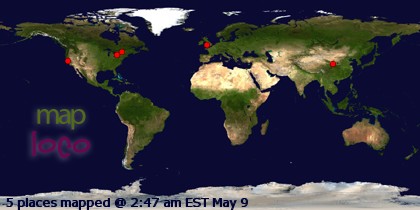Well that was quite a lull wasn’t it? I guess I haven’t been
actually that busy with training for a while and the time I have spent in the
dojo has been mostly about helping others. Our dojo suddenly seems full of
newish people, space is in demand and I generally default into the helping
position when it gets congested.
I would like to share one point though that was conveyed to
me by Murakami Sensei during his visit to Wroclaw recently. As I may have
mentioned, this was the first time for me to meet him and his dojo members and
it was a very enjoyable few days. What comes across very clear from Murakami
Sensei is that very little of what he does he does simply because someone has
told him so. It is very obvious that he is no stranger to hard and vigorous
training and everything he demonstrates he does so with an air of something
very well grounded in. He does iaido and jodo as it works for him, a lot of
which I’m sure is because he has applied himself so hard to learning but the
outward appearance isn’t that he has great difficulty doing anything that he
demonstrates.
One thing which stuck with me was his very interesting
explanation of ochiburi and how it makes it much easier to do. I would like to
start this explanation with a premise concerning a particular point within the
ochiburi action and if you don’t already do it this way then this post might
not be very helpful. That premise is that between the point from the arm being
stretched out to the right to the point where it brings the sword close to the
head that the grip should relax so that the potential to do tenouchi is
created. I realise that the absence of this premise is that the right hand
holds the sword very stiffly maintaining an elevated kensen throughout this
action. I don’t personally believe that that way of doing it is natural or
necessary if the physical action of chiburi is to shake the blood from the
sword (regardless of whether that literal interpretation is practical or not).
What has always been a difficulty for me though is
maintaining some semblance of kissaki control during this action, typically
with the kissaki waving to the left and right so that it goes behind my head
and then back to the outside as the grip starts to engage. Through the
transition from the position of the right arm being outstretched to holding the
sword near the temple the following conditions must be maintained (or so I have
been taught):
1.
The kensen must not drop below horizontal
2.
The kensen should not waiver to the left and
right but should remain at roughly the same relative position to the hand
3.
The grip should relax so that tenouchi can be
used to actually make the chiburi cutting action
Murakami explained that the seiteigata method of doing this
was to ensure the the kensen projects out to the side when the right arm is
outstretched, essentially meaning that the right hand grip doesn’t change from
the end of the kirioroshi. He further
outlined that it was koryu methodology that required the kensen going straight
back but seitei should have the sword kept out to the side (see images below).
The images above don’t of course show the final position by
the side of the head with the tsukagashira towards the front of the right eye
but I’m sure you get the meaning.
Anyway, by actively making the kensen adjust from an oblique
position to a straighter position during the movement from outstretched to the
temple this tends to keep the kensen in a much tighter control that is, it is
easier to control the position by actively moving it rather than trying to keep
it relatively still. Simple though this revelation was it fairly well fixed a
problem that didn’t seem to be going away. Such is life with long arms and a
long sword.
I think now even in shoden I will try to provide a small
part of this movement even though I try to keep the movement more fluid.
I don’t believe it is explicitly written in the ZNKR seitei
manual that ochiburi must be performed like this, it sounds like something
transmitted orally and learned through good training which is the thing that is
so obvious with Murakami Sensei, he appears like a keiko workhorse.
Shortly after this seminar Murakami Sensei with his brother
won the All Japan Jodo Championships for 7th dan, an acclaim which I
think must be well deserved. There were some aspects of his technical
methodology in both iaido and jodo which I had not come across before and even
where it was slightly counter to my study lineage it was all worth trying,
incorporating and finding useful aspects for one’s own technique. His compact
but devastating hikiotoshi demonstrated to me how important it was to keep
one’s body angle at 90 degrees for as long as possible so that the hip twist is
still taking place during the contact period between jo and tachi.
Anyway, a new blog entry is waiting for my fingertips….








